One of the things that studying royal weddings teaches you (very quickly!) is that romance often had very little to do with marriage, even among those monarchs who could choose their own spouse, and who claimed to marry for romance.
The best example of this is the “romance” and marriage of Napoleon III and Eugenie de Montijo.
Napoleon III was a notorious womaniser, and Eugenie was a notorious virgin – notorious for such because she refused to enter into affairs for reasons that were more strategically based than morally based.
Eugenie and Napoleon first met in the early 1850s when he was president of France. The Spanish Eugenie was in Paris on a husband-hunting tour of Europe, and was the toast of the town for her beauty and grace. Naturally, Napoleon was intrigued, and began to pursue Eugenie, to no avail. One didn’t catch a husband by becoming the mistress of the President of France. Even once Napoleon staged a coup and became Emperor, Eugenie was not swayed.
By all accounts the young Eugenie was what 1950s movies would call a ‘tease’. She loved to behave as provocatively as possible, often straying well beyond the bounds of propriety (there are accounts of dancing on tables with her skirt drawn up to her thighs), but when it came to actual action she refused even the smallest kiss.
Throughout the early 1850s Eugenie and Napoleon played cat and mouse. He tried to take her arm, she reminded him that her mother took precedence over her, and consigned her frustrated swain to escorting her mother on walks. She made it clear their was no action without marriage, he sent official emissaries to call on Dona Manuela and Eugenie to inform them that under no circumstances would he be marrying Eugenie. He sent her completely inappropriate gifts, the sort that men sent mistresses, not women they were courting, she accepted them, and reciprocated with…nothing! He invited Eugenie to events specifically engineered to tempt or trick her into an assignation, she stubbornly remained surrounded by chaperones and other men. At once house party Napoleon is reputed to have asked Eugenie the way to her room (some versions say ‘heart’), to which she coyly replied “through the chapel Sire.”
Saucy minx!
All this would have been unremarkable, the height of propriety even, if Eugenie had not made it clear to Napoleon that she wasn’t interested in him and only wanted him for his status and his family lineage. And he didn’t care.
In 1852 both parties reached an impasse, and Napoleon turned his attentions from wooing Eugenie to courting a ‘suitable’ princess.
First he offered marriage to Carola, Princess Vasa, but her father opposed the marriage, and 20 years later, when Napoleon’s dynasty failed he triumphantly stated “I foresaw that correctly!”
Immediately upon receiving Carola’s rejection he proposed (via a letter) to the 16 year old Princess Adelheid of Hohenlohe-Langenburg, Queen Victoria’s niece, whom he had never met. Adelheid was thrilled, Queen Victoria was scandalised (Napoleon III’s position being too shaky, and his lineage too murky for one of Victoria’s relatives), and Adelheid’s parents sided with their influential English relatives and turned Napoleon down flat.
Thank goodness, because the impulsive Napoleon had already succumbed and proposed to Eugenie without waiting for Adelheid’s response! He narrowly avoided having two fiancees and sparking a major international incident!
With disaster averted, Napoleon announced the engagement on 22 Jan 1853, saying:
“I have preferred a woman whom I love and respect to a woman unknown to me, with whom an alliance would have had advantages mixed with sacrifices”
The French elite expressed envy disguised as scandalised propriety and snobbery at the match – Eugenie was a mere countess marrying an emperor. But at least it was for love, how romantic, how French.
The rest of Europe expressed undisguised amusement, both at the elitism, and the claims of romance. Eugenie was, after all, descended from a long line of nobility – Napoleon III was only three generations from an unknown Corsican family, even if he wasn’t illegitimate. And no one believed the claims of love – everyone knew she was marrying him for his position, and he was marrying her because he couldn’t have her any other way.
Having finally put temptation above international alliances, Napoleon wasn’t going to let little things like propriety, political stability, and good sense stop him from marrying Eugenie as soon as possible.
Yeah, so they were married less than two weeks after getting engaged, on the 30th of January.
Romance isn’t everything though, despite all the odds, and in contrast to romantic marriages (like that of Elizabeth of Austria and Franz Joseph), the marriage was actually a success.
And Eugenie wore a fab wedding ensemble 😉
And notice that it is white, an idea she borrowed from Victoria to add a regal and proper touch to the wedding.

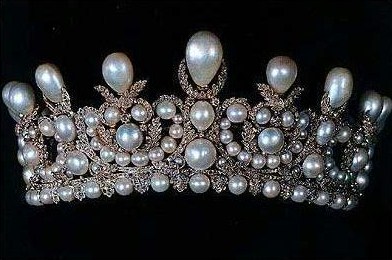
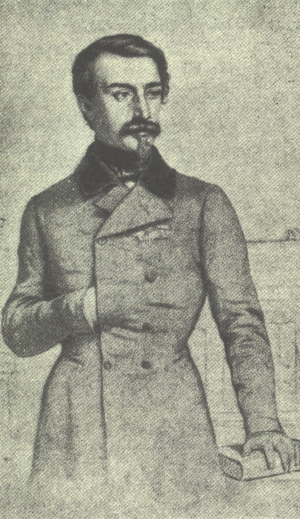
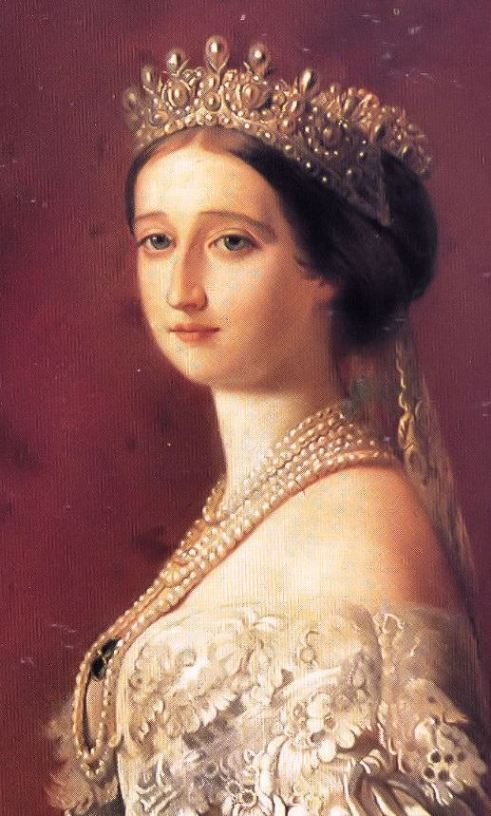
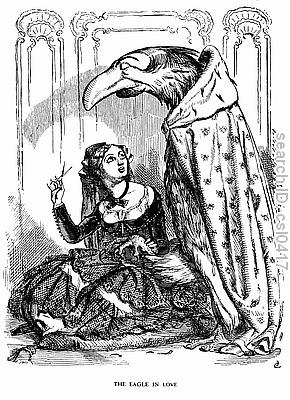
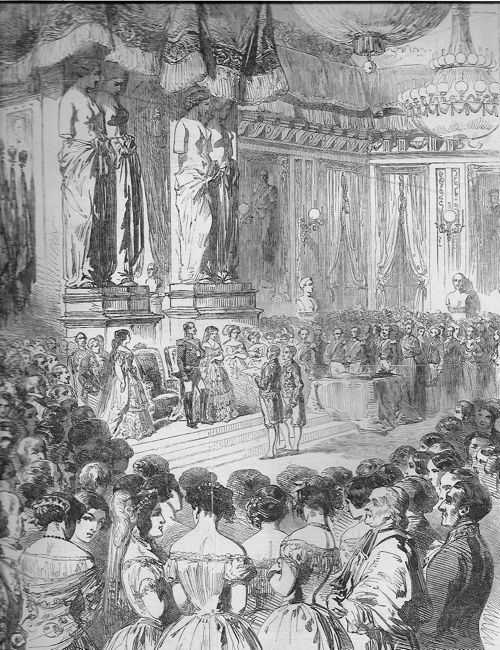
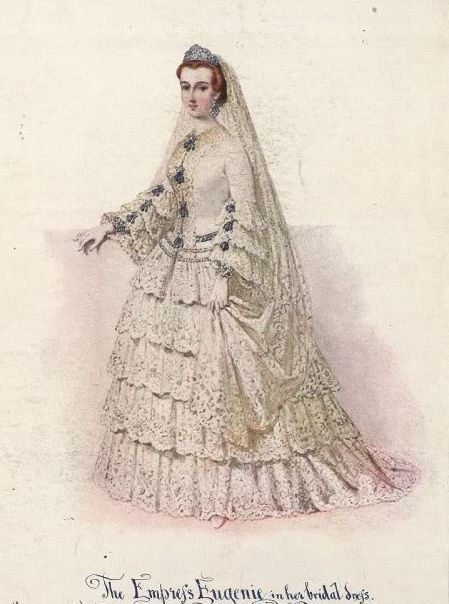
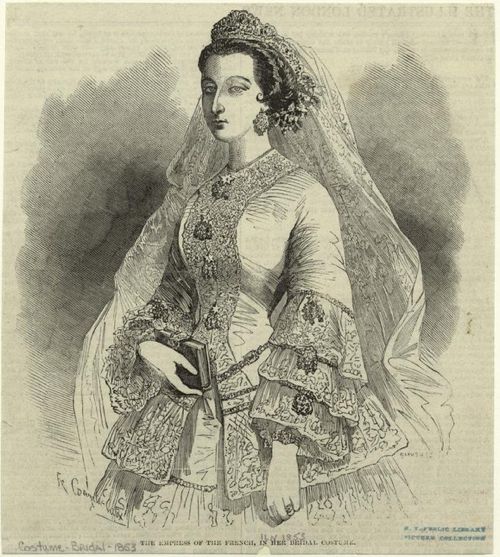
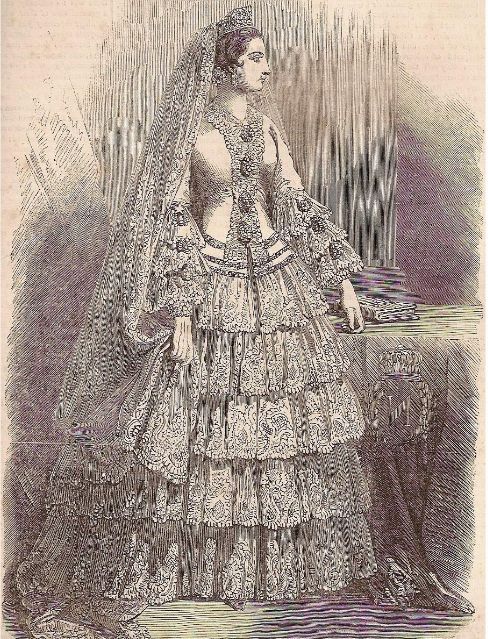
Well played, Eugenie!
Isn’t that the oldest trick in the feminine playbook? Don’t put out until you get what you want? Heh…
Didn’t Napoleon set aside Josephine for Eugenie, mostly because she couldn’t have an heir? Napolean wanted more than to loose Eugenie’s stays, he needed a brood mare.
Poor Eugenie, forced into exile… The whole thing is so tragic. You’re right, the history of royal families is incredibly sad sometimes. Most of the time.
You’re thinking of Napoleon Bonaparte (Napoleon I), who set aside Josephine for Marie-Louise of Austria. Eugenie married the nephew of Napoleon I, Napoleon III.
Napoleon III needed an heir too, at least according to his advisors, but the man himself did seem to value Eugenie for herself than for her reproductive properties. She almost died having their only child, Louis Napoleon, and Napoleon III was asked by the doctors who they should save “the woman or the child” and he unhesitatingly said “the woman!” which is rather sweet.
Interestingly, Napoleon III was also the grandson of Josephine, because Bonaparte’s brother married Josephine’s daughter from her first marriage, Hortense, and Napoleon III was their child.
Nice. That’s what I get for skimming French history. 🙂 Thank you for the enlightenment.
I really enjoyed reading this post. Especially the parts about Eugenie’s antics.
In those days, a woman’s wiles were her only controllable asset. Everything else was outside of her control, so it is little wonder that smart and or beautiful ones worked the space the only way they could!
It annoys the stuffing out of me when women do that these days though – I don’t mean abstaining before marriage, I mean playing silly persons with men. It’s not necessary. We have so many other cards to play now.
Hear hear!
Nah, some women are just silly creatures to be pitied, they haven’t many cards to play. I tend to roll my eyes at those types and ignore them, as any man worth his salt will.
Hey, girl’s got to do what a girl’s got to do. I dont agree with the constant bait-throwing yet she became an empress. Kudos.
Well written, what fun! I want more! You say the marriage was a success…how? What happened to Empress when the regime toppled?
A devoted reader asking for the sequel,
Natalie
Love it! (Aside from the fact that in the last picture she looks like her right arm is on backwards. What’s going on there?)
[WORDPRESS HASHCASH] The poster sent us ‘0 which is not a hashcash value.
Love it! (Aside from the fact that in the last picture she looks like her right arm is on backwards. What’s going on there?)
Oh! Just looked at it again, and that’s not her arm, it’s her WAIST. I was looking at it wrong.
(That’s kind of like that vase/woman picture. I can look at it both ways, but not both at once.)